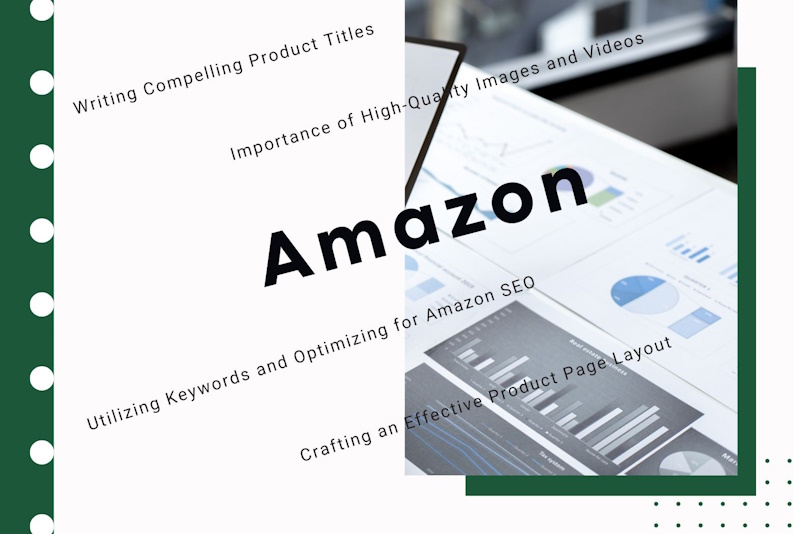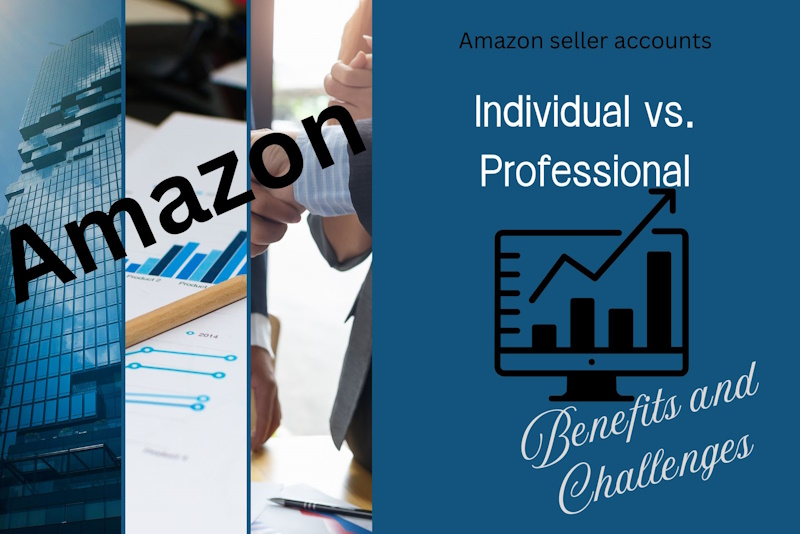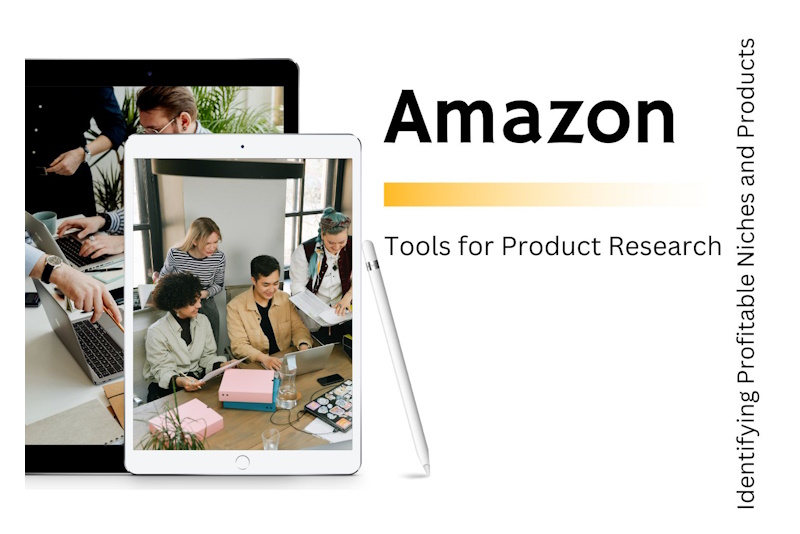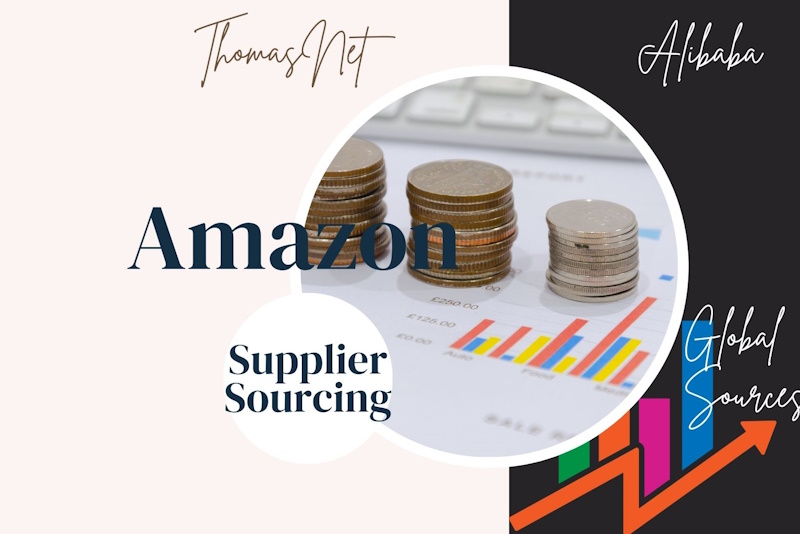How to Optimize for Maximum Conversions on Amazon

Creating a winning product listing is essential for driving traffic, boosting sales, and increasing your visibility on Amazon. A well-optimized product listing ensures that your products are not only discoverable but also compelling enough to convert visitors into buyers. In this blog post, we’ll cover key strategies for writing compelling product titles, bullet points, and descriptions, the importance of high-quality images and videos, how to utilize keywords for Amazon SEO, and crafting an effective product page layout.
Writing Compelling Product Titles, Bullet Points, and Descriptions
When customers search for products on Amazon, the first thing they see is the product title, followed by bullet points and descriptions. Creating concise, clear, and compelling content for these sections will help your product stand out.
1. Product Titles
- Best Practices:
- Include the main keyword for your product.
- Clearly state the brand name, product type, size, color, and key features.
- Keep the title within 200 characters (as recommended by Amazon) but avoid keyword stuffing.
- Use capitalized letters at the beginning of each word for readability (but don’t capitalize entire words unless it’s a brand name).
Example:
“Stainless Steel Water Bottle | Double Wall Vacuum Insulated | 20 oz | Leak-Proof Lid | BPA-Free | Ideal for Hot and Cold Drinks | Blue”
Key Takeaways:
- The title is descriptive and keyword-optimized (“stainless steel water bottle,” “vacuum insulated”).
- It highlights important features like capacity and material (“20 oz,” “BPA-free”).
2. Bullet Points
- Bullet points are the quick, scannable highlights of your product. They should focus on the product’s benefits and features.
- Use 5 bullet points to cover key aspects such as:
- Core product features (material, size, compatibility).
- How the product solves a problem or adds value.
- Unique selling propositions (e.g., eco-friendly, ergonomic).
- Special offers or warranties.
- Care or usage instructions.
Example Bullet Points:
- Durable & Long-Lasting: Made from premium stainless steel, designed to withstand daily wear and tear.
- Temperature Retention: Keeps drinks hot for up to 12 hours and cold for up to 24 hours.
- Leak-Proof Design: Features a secure, spill-proof lid that’s perfect for travel and outdoor use.
- Eco-Friendly: BPA-free and reusable to help reduce plastic waste.
- Easy to Clean: Wide mouth makes it simple to add ice cubes and clean thoroughly.
Key Takeaways:
- The bullet points focus on benefits (e.g., “keeps drinks hot for 12 hours”) while providing enough detail to give the buyer confidence in the product’s quality.
3. Product Descriptions
- This section allows for more detailed storytelling about your product. It’s your opportunity to highlight the unique features and advantages of your product in a narrative format.
- Focus on customer benefits, emphasizing why your product is better than competitors. Use simple, engaging language to guide the reader.
- Include keywords naturally throughout the description for SEO without overstuffing.
Example Product Description:
“Stay hydrated on the go with our sleek, stainless steel water bottle. Designed for both hot and cold beverages, this bottle is perfect for outdoor adventures, office use, or hitting the gym. Its double-wall vacuum insulation ensures that your drinks stay at the right temperature for hours, while the leak-proof lid offers peace of mind during travel. BPA-free and eco-friendly, it’s a sustainable choice for those who care about the environment. Plus, its easy-to-clean design means you’ll never have to worry about lingering odors or tastes. Upgrade your hydration game today!”
Key Takeaways:
- The description tells a story, connecting the product to specific use cases and customer needs.
- Keywords like “stainless steel water bottle” and “leak-proof lid” are included naturally.
Importance of High-Quality Images and Videos
Images and videos are critical for conversion because they give customers a visual understanding of the product. Since customers cannot physically touch or see the product in person, high-quality visuals are essential to winning their trust.
1. High-Quality Images
- Main Image: The first image should be on a white background and clearly show the product. Amazon requires the product to take up at least 85% of the image.
- Lifestyle Images: Show your product being used in real-life situations. These images help customers visualize how they will benefit from using your product.
- Infographics: Use infographics to highlight key product features or benefits directly on the image (e.g., showing the temperature retention or materials used).
- Zoom Functionality: Ensure your images are high-resolution (at least 1000×1000 pixels) to enable Amazon’s zoom feature, allowing customers to inspect details closely.
2. Videos
- Adding product videos can significantly improve your conversion rates. These videos can be either demonstration videos showing how to use the product or explainer videos highlighting its unique features.
- Amazon supports up to 45 seconds of video, so keep it concise and focused on how your product benefits the customer.
Utilizing Keywords and Optimizing for Amazon SEO
To increase visibility and traffic to your product listing, optimizing for Amazon’s A9 search engine is crucial. Here’s how to effectively use keywords:
1. Keyword Research
- Use tools like Helium 10, Jungle Scout, or MerchantWords to find relevant, high-volume keywords for your product.
- Look at your competitors’ listings and customer reviews to find additional keywords related to your niche.
2. Title Optimization
- Include the primary keyword in your product title as close to the beginning as possible. Make sure it flows naturally and doesn’t look forced.
3. Backend Keywords
- Use the backend keyword fields in Seller Central to add additional keywords that might not fit naturally in your title or description (e.g., synonyms, misspellings, or related terms).
- Don’t repeat keywords already used in the title, bullets, or description.
4. Bullet Points and Description
- Naturally incorporate secondary keywords into your bullet points and product description. Be careful not to overdo it—focus on readability and providing value to the customer.
Crafting an Effective Product Page Layout
Your product page should be clean, visually appealing, and easy to navigate. Here are some tips for crafting an engaging layout:
1. Start with Strong Visuals
- The first thing customers see is the product images and title. Use high-quality images and a clear, descriptive title to grab attention immediately.
2. Keep Bullets Short and Punchy
- Your bullet points should be easily scannable. Keep each point focused on a single feature or benefit.
3. Engage with the Description
- While not everyone reads product descriptions, those who do are likely serious buyers. Make it engaging, informative, and easy to read, with short paragraphs and relevant keywords.
4. Use Enhanced Brand Content (EBC)
- If you are brand-registered, take advantage of A+ Content or Enhanced Brand Content (EBC), which allows you to add more visually rich elements to your product page, like comparison charts, banners, and videos. This can significantly boost your conversion rate.
5. Leverage Customer Reviews
- Encourage buyers to leave reviews and ask questions. A product page with lots of positive reviews, especially those that include user-generated images or videos, builds trust and boosts conversion.
Creating a winning product listing on Amazon requires attention to detail, careful keyword optimization, and a customer-first approach. By crafting compelling product titles, bullet points, and descriptions, using high-quality images and videos, and optimizing your page for Amazon SEO, you can significantly increase your visibility and conversions. Whether you’re just starting out or looking to improve existing listings, these strategies will help you build a product page that converts casual browsers into satisfied buyers.
Ready to optimize your product listings? Use these strategies to stand out from the competition and watch your Amazon business thrive.




